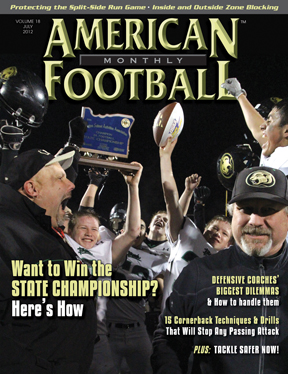Article CategoriesAFM Magazine
|
What, as a Defensive Coach, Gives You the Most Trouble?by: JohnAllen SnyderOffensive Coordinator Pequea Valley High School (PA) © More from this issue Coaching football is simple in theory - score touchdowns, and stop the opposition from scoring touchdowns. Too bad theory isn’t reality. Every football coach in the world understands that there is a lot more to it than that. Defensively, you are charged with stopping an entire offense in a few short days of practice and game planning. Each coach has their own way of going about stopping each team. Over the years, you develop your defense to suit your team and stop the opposition, yet for each of us, there is always that thorn in our sides. That is, one thing we couldn’t stop – either a formation or an individual play. It haunts us. We lay awake at night scribbling new ideas, wasting napkin after napkin trying to stop the bleeding. AFM interviewed nine different defensive coaches about what gives them the most trouble and what....The full article can only be seen by subscribers.
|
|
|||||||
| HOME |
MAGAZINE |
SUBSCRIBE | ONLINE COLUMNISTS | COACHING VIDEOS |
Copyright 2025, AmericanFootballMonthly.com
All Rights Reserved





